Kraków 1.05.2007
WSK Mielec MiG-17, Lim-5, Lim-5 P. Construction. 1956
140 Section 1956.05.25.
Poland. Fighter aircraft.
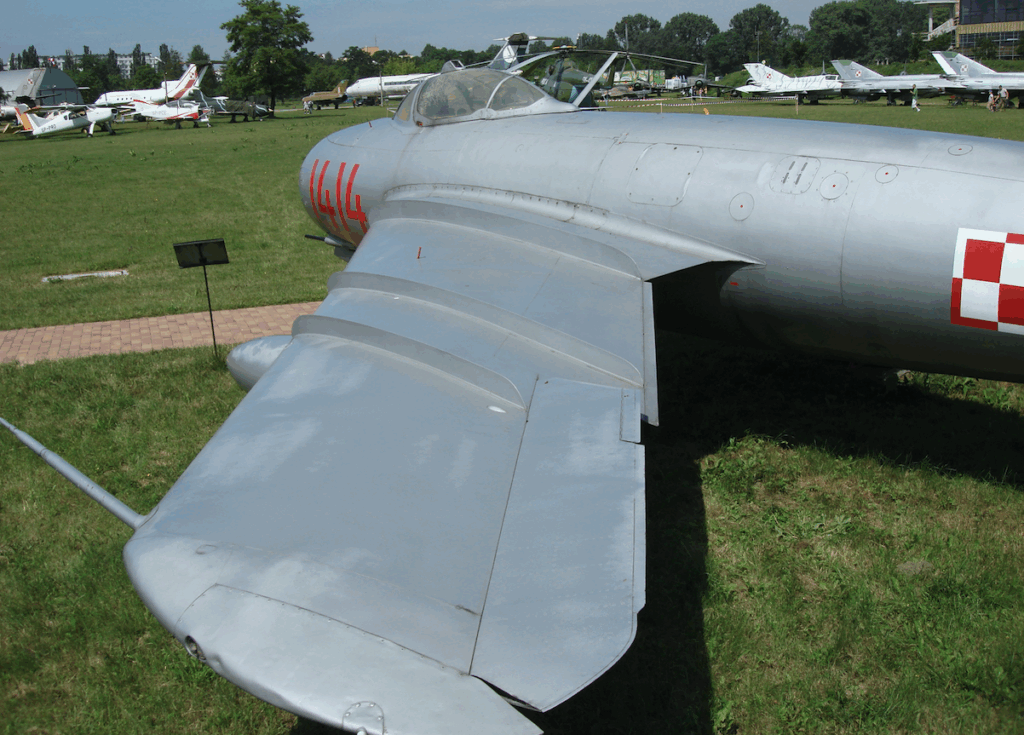
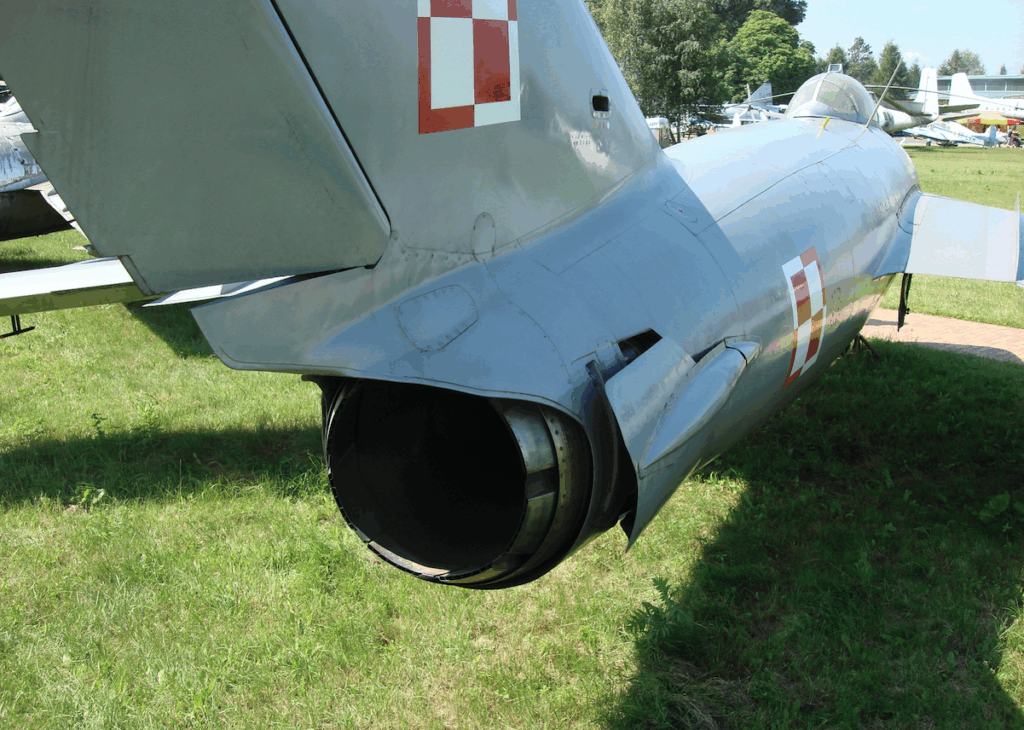
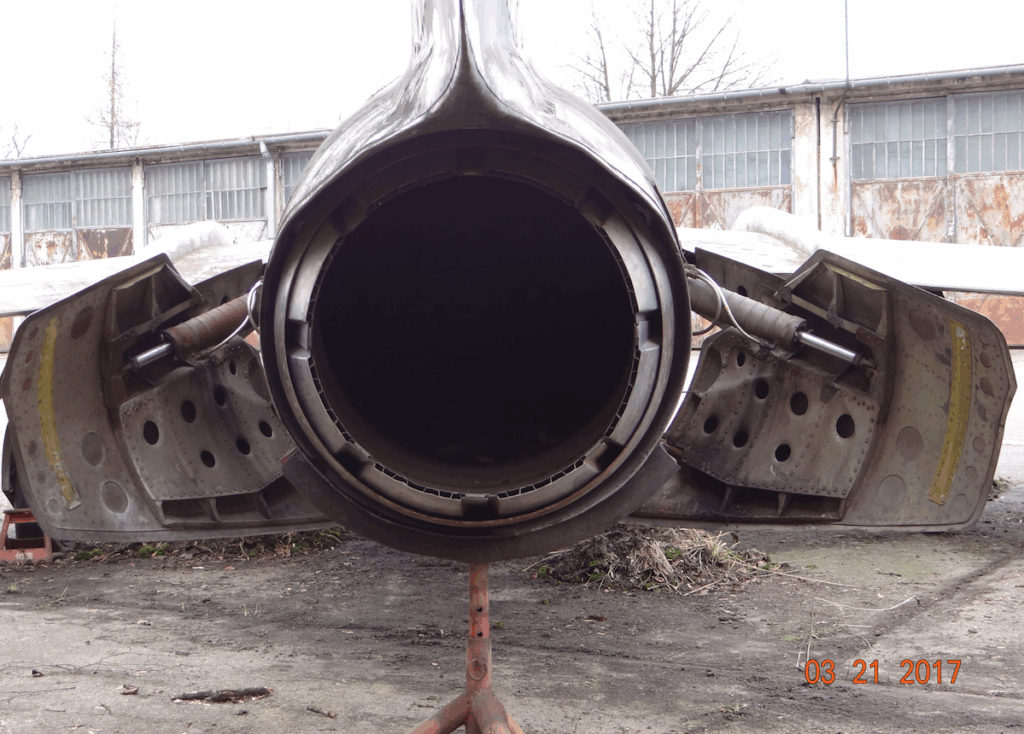
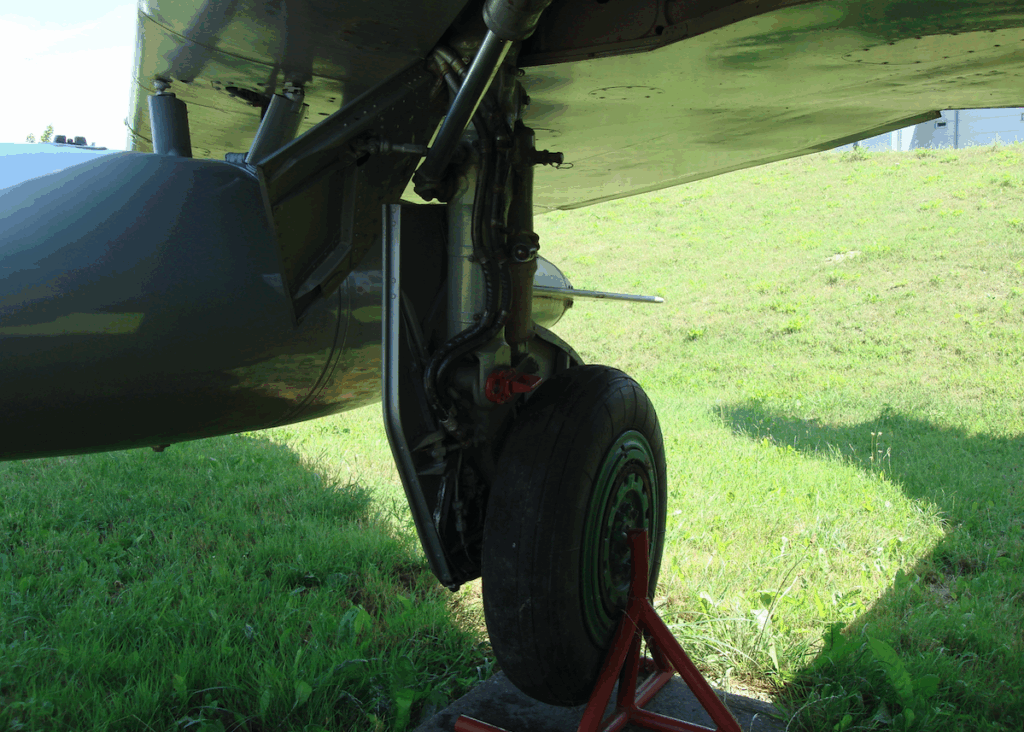
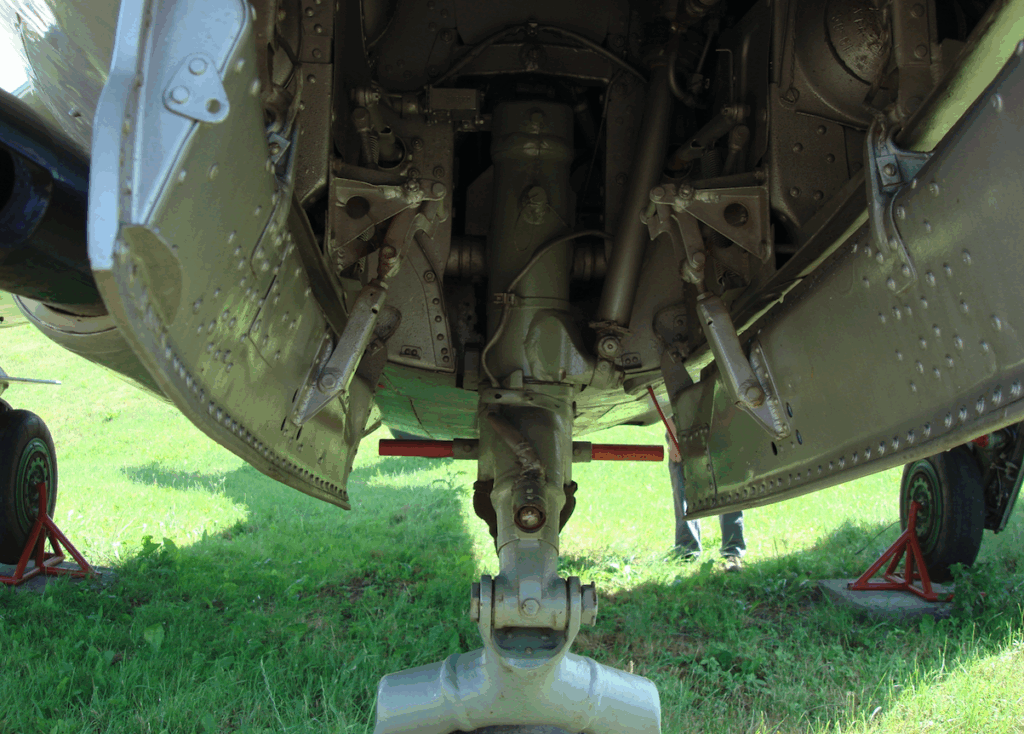
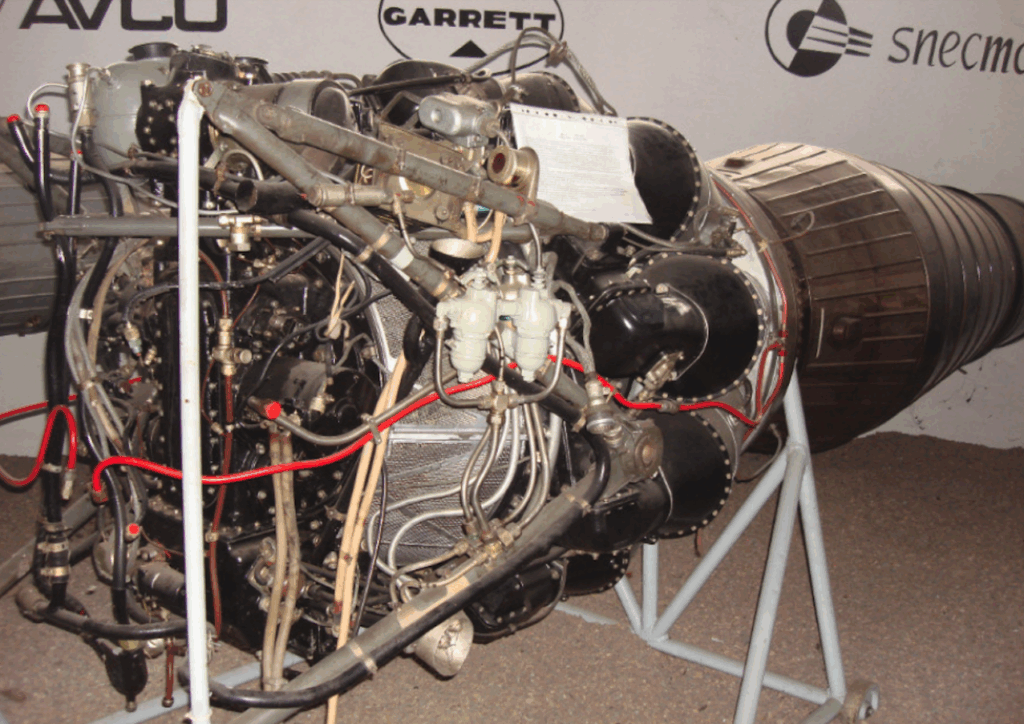
Lim-5 design.
The aircraft is a consistent development of the MiG-15 bis ( Lim-2 ) design, which received primarily a new power unit equipped with an afterburner, which its predecessors did not have. The entire aircraft layout was retained, but thanks to the longer power unit, the fuselage was lengthened, which made the aircraft slimmer. However, the significantly stronger thrust of the power unit did not cause the aircraft to become a supersonic design. It is true that the machine is capable of reaching speeds equal to or slightly greater than Ma-1, and in horizontal flight, but this only lasts a short time and is paid for with significant fuel consumption. However, most importantly, the serial aircraft are equipped with an automatic system that extends the brakes at a speed of M-0.97 and retracts them automatically after reducing the speed to Ma-0.92. In other words, it is a typical fighter that does not exceed the speed of sound.
The Lim-5 aircraft is a single-engine, single-seat front-line fighter, built in a classic layout. Mid-wing, with swept wing. Semi-monocoque, riveted construction.
Swept wing, called sickle, with a swept angle of 45 degrees at the fuselage and 42 degrees at the tip. Laminar profile S-12s at the root and SR-11 at the tip were used. Wing area is 22.6 m 2, wedge angle 1 degree, lift -3 degrees, relative thickness 8%, aspect ratio 4.08, convergence 1.23. The structure is single-spar with a rear auxiliary spar. At the tip of each wing are loading masses of 5.1 kg. Flaps behind the wing with a total area of 2.86 m 2, deflected for take-off by 20 degrees, and for landing by 60 degrees. Ailerons with a total area of 1.6 m 2, deflected up and down by 18 degrees. The left aileron is fitted with a trimmer, operated by an electric motor. The upper surface of the airfoils has three pairs of aerodynamic guides. The wing is attached to the fuselage using four nodes.
The fuselage of the aircraft has a circular cross-section, technologically divided into two parts. The front part consists of 13 frames, the rear part of 18. The engine and the rear wing spar are mounted to frame 13. The maximum diameter of the fuselage is 1.45 m, the elongation is 6.17 m. The thickness of the covering is from 1.5 to 1 mm. The walls of the air ducts are 0.8 mm thick. The aerodynamic brakes with a total area of 0.98 m2 are deflected by an angle of 55 degrees. The brakes are operated by the pilot, and additionally by an automatic system that does not allow exceeding critical speeds. At a speed of Ma-0.97 the brakes open and close at Ma-0.92. The pilot’s cockpit is partially armored from below. The glazing is a front fixed windshield with a central armored window and a fairing that is manually moved backwards. A periscope is mounted on top of the glazing to observe the rear zone. In the cockpit there is a G-suppression system with a PPK-1 suit and an ejection seat with a face shield. Ejection is permitted in flight above 250 m and up to a speed of 850 km/h.
Vertical stabilization with an angle of 56 degrees, area of 4.26 m2, including 0.947 m2 of rudder. Deflection angle of 25 degrees to each side. Horizontal stabilization with an angle of 45 degrees, area of 3.10 m2, including 0.884 m2 of rudders. There is a trimmer on the left rudder. The rudders are deflected 32 degrees up and 16 degrees down.
Front landing gear with wheel dimensions 480 x 200, main with wheels 660 x 160. Landing gear base 3.368 m, wheelbase 3.849 m.
Lim-5 engine.
The licensed Lim-5 and Lim-5 P aircraft built in Poland are powered by engines also manufactured under license by the Polish industry in WSK Rzeszów. This is a Lis-5 engine (licensed engine) with a thrust of 1 x 26.46 kN (1 x 2 700 kG), and with afterburning 1 x 33.12 kN (1 x 3 380 kG).
The afterburner is connected to the engine and is an extended and suitably formed exhaust pipe. A set of injectors is placed there, through which additional fuel is supplied, and its combustion causes an increase in thrust. The afterburner is finished with an adjustable nozzle. During the afterburner operation, the nozzle is completely open. When the afterburner is switched off, the movable segments close, reducing the cross-section of the exhaust port. Fuel is supplied to the engine by the PCR-1-5 pump.
Fuel is placed only in the fuselage of the aircraft, in the same way as in the Lim-1 / -2 fighter. The main soft-type fuel tank is placed between the cabin and the engine and has a capacity of 1,200 (1,250) liters. The second metal tank consists of two halves covering the engine in the rear part of the fuselage. The tank has a capacity of 2 x 165 liters.
The internal fuel supply can be increased by using tanks suspended under the wings with a capacity of 2 x 400 liters. These tanks are made of duralumin sheet or plastic. They can be dropped during flight.
Lim-5 installations.
The aircraft is equipped with advanced automation of various systems powered by various installations; fuel, hydraulic, pneumatic, oxygen, air conditioning, electrical and anti-icing.
VHF R-800 or R-801 W. Friend-foe identification device SRO-1, SRO-2 or Chrom (in the latest Lim series). This device automatically responds to a special code sent by radio from another aircraft or ground station.
Syrena-2 radiation warning device. It signals about radiation of the aircraft’s rear half-zone by the radar rangefinder or SR (radar station) of the enemy aircraft.
OSP-48 set used for landing by instruments (RW-2 radio altimeter, ARK-5 radio compass, MRP-48 P radio beacon overflight signal receiver). The RW-2 radio altimeter performs precise measurements in the range from 0 m to 600 m. Its receiving antenna is located on the gun carriage, and the transmitting antenna is located at the rear of the fuselage. The ARK-5 frame-type radio compass antenna and the MRP-48 radio beacon overflight receiver antenna are located under the fuselage in a capsule covered with organic glass.
Aiming is enabled by the ASP-4 NM optical automatic gyroscopic sight (or the older ASP-3 NM), working with the SRD-1 M radio rangefinder, which measures the actual distance to the attacked target.
The piloting and navigation equipment includes: KUS-1200 speedometer, AGI-1 artificial horizon, DGMK-1 gyromagnetic compass, variometer.
Lim-5 armament.
The aircraft’s armament was practically taken over from the MiG-15 fighter. It usually consists of one N-37 D cannon (or similar) with a supply of 40 rounds and two NR-23 cannons (or similar) with a supply of 80 rounds for each cannon. There are also aircraft with fewer cannons; e.g. 1 caliber 37 mm and 1 caliber 23 mm. The cannon mounting system is based on a lowered carriage. It is supplemented by a S-13 type photo gun.
The aircraft’s permanent equipment also includes an EKSR-46 electric rocket launcher built into the vertical stabilizer, close to its base. It has four signal rockets in different colors.
All versions have the ability to carry two bombs weighing from 2 x 50 kg to 2 x 250 kg. They are mounted using D-4-50 ejector locks in place of additional fuel tanks.
Some machines are equipped with an AFA-39 camera as standard. The camera is located in the lower part of the fuselage in the middle of its length. It takes up to 200 photos from an altitude ranging from 500 m to 5,000 m.
Lim-5 P design.
Compared to the basic version, the aircraft received the RP-5 radar sight. It is built in a dual-antenna system. One search antenna, the other targeting antenna. Both were placed in the front part of the fuselage. One in the air intake bulkhead, the other above the air intake.
Since the SR (radar sight station) has its considerable weight, the lighter NR-23 was installed instead of the left N-37 D cannon to reduce the aircraft weight. Thanks to this, the aircraft had three identical cannons.
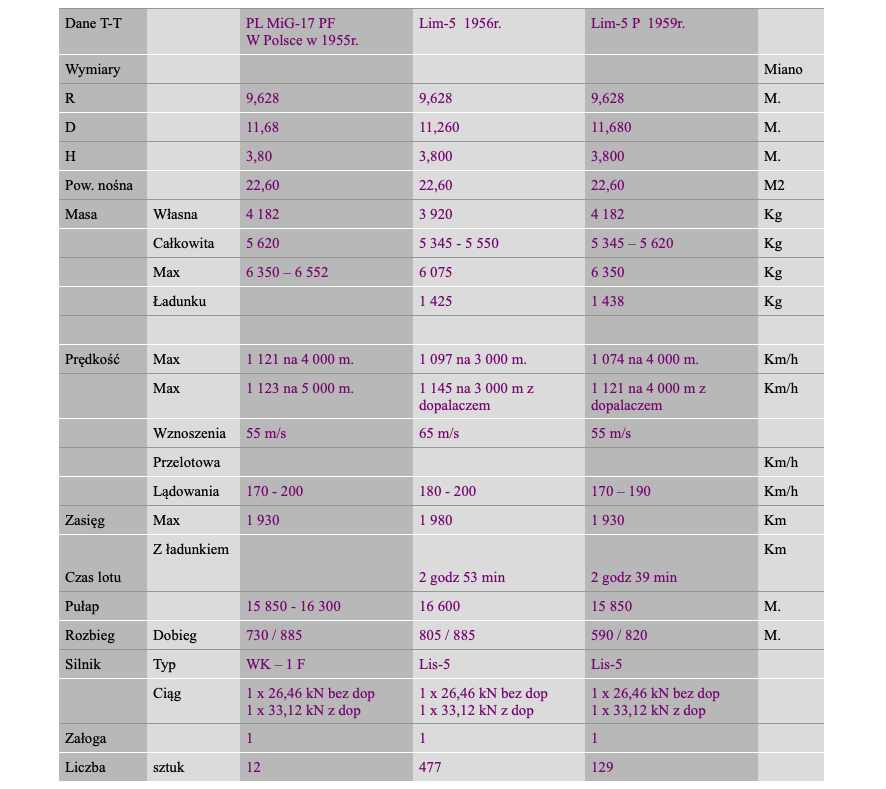
Written by Karol Placha Hetman

